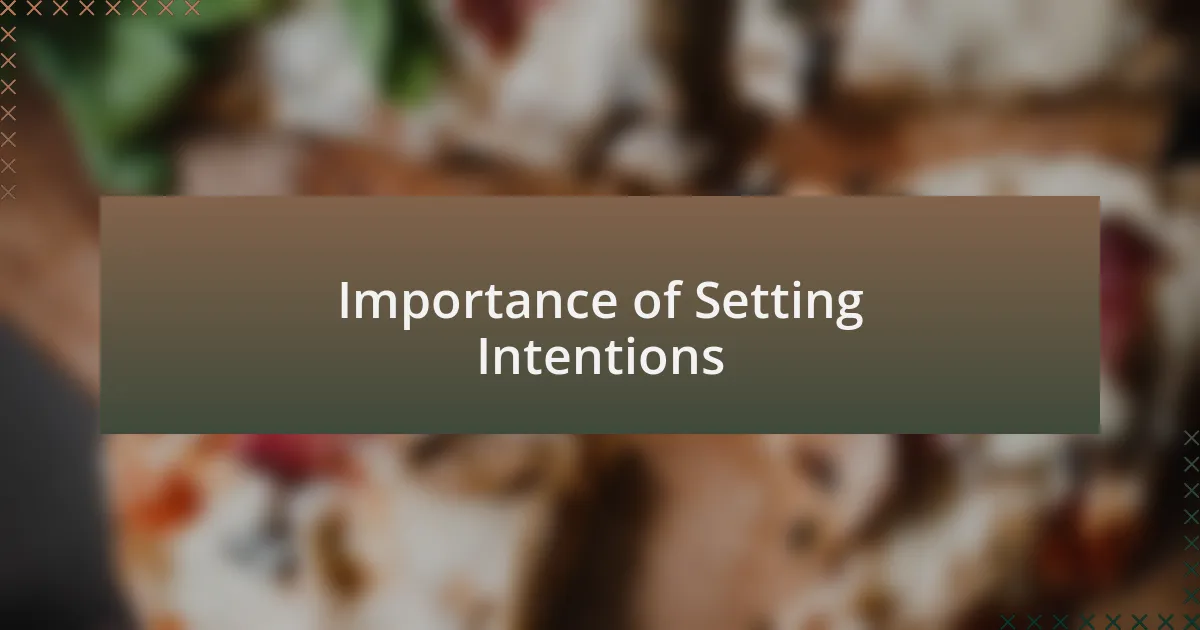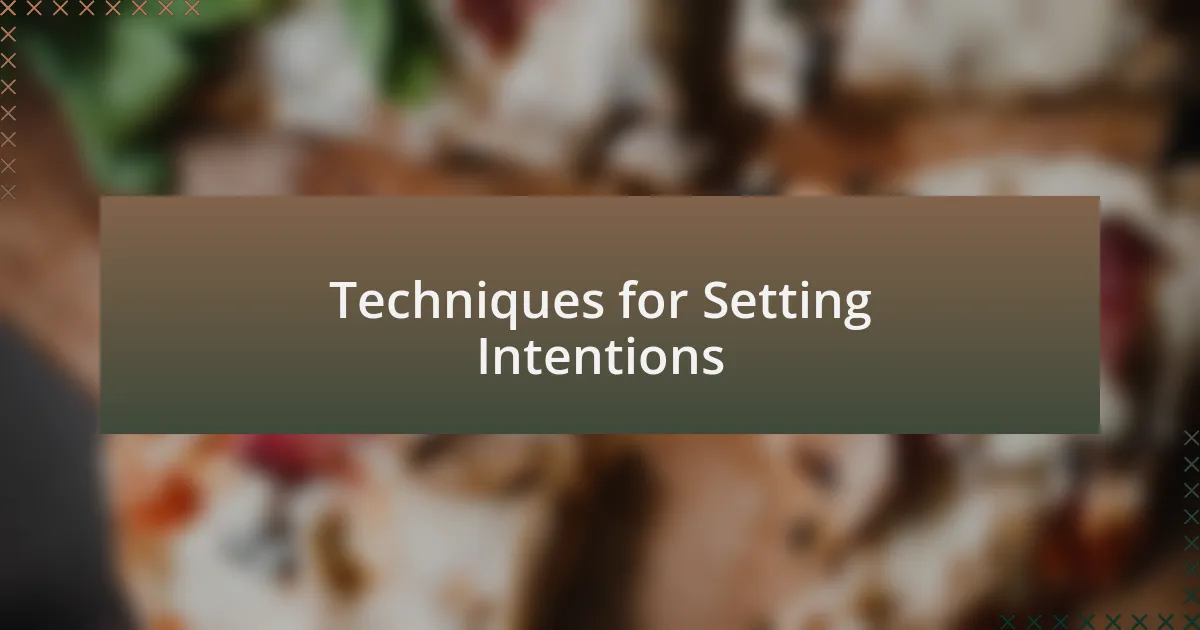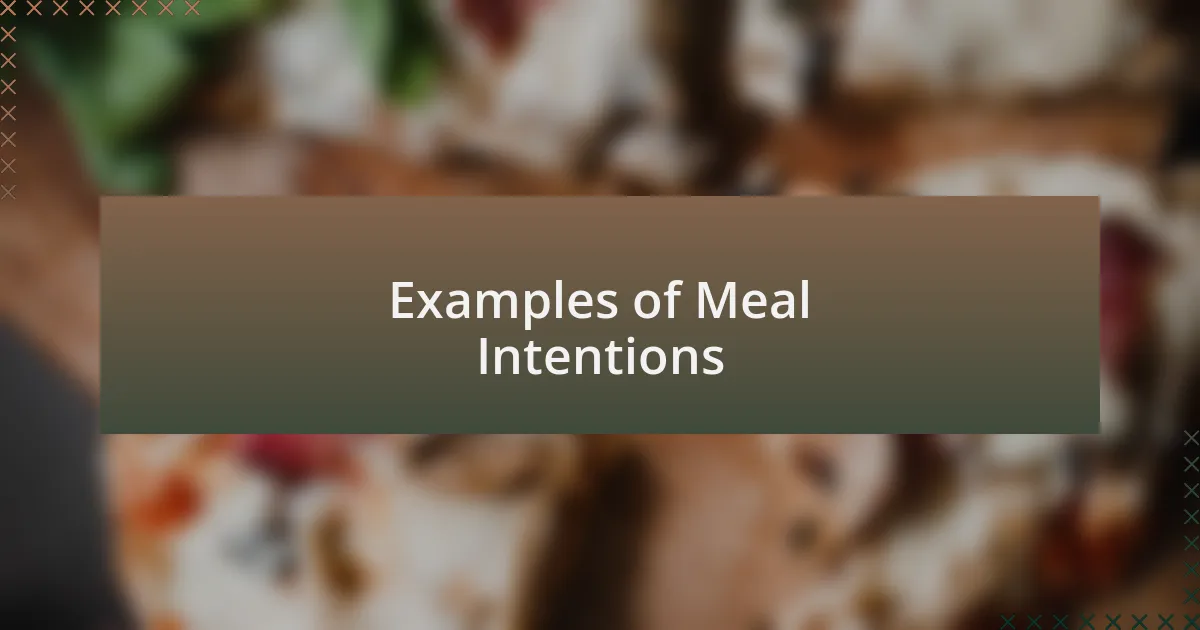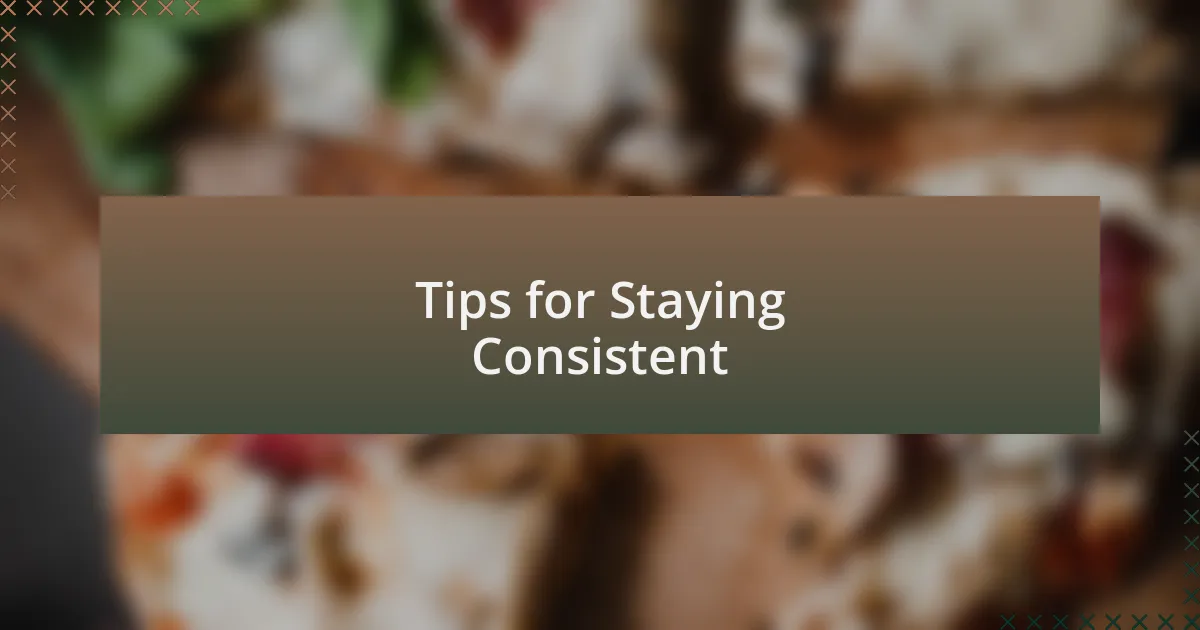Key takeaways:
- Healthy eating is a holistic approach that prioritizes nourishment for both the body and mind, emphasizing the importance of food choices on emotional well-being.
- Setting intentions before meals enhances mindfulness, connects dining to personal goals, and transforms eating into a more meaningful and satisfying experience.
- Mindful eating can prevent overeating and foster a deeper appreciation for food, contributing positively to overall mental health.
- Creating rituals and documenting intentions can help maintain consistency in mindful eating practices, reinforcing accountability and connection to food choices.

Understanding Healthy Eating
Healthy eating is more than simply choosing the right foods; it’s about nourishing the mind and body in a way that promotes overall wellness. I remember a time when I viewed healthy eating as just a checklist of foods to avoid or include. But over the years, I’ve discovered that it’s about understanding how different foods make me feel and how they fuel my activities.
When I sit down to a meal, I often reflect on the relationship between my food choices and my mental clarity. Have you ever noticed how certain meals leave you feeling energetic while others make you sluggish? This realization has transformed my approach to food, guiding me to prioritize whole, minimally processed ingredients that support my goals and emotional well-being.
Incorporating variety into my meals has also been eye-opening. I used to think that healthy eating meant sticking to a rigid diet, but I’ve learned that experimenting with different flavors and cuisines not only makes meals more enjoyable but also broadens my nutritional intake. This diversity reflects the richness of life itself, don’t you think?

Importance of Setting Intentions
Setting intentions before meals plays a crucial role in fostering a mindful eating experience. I often take a moment to pause and think about what I want to gain from my meal—be it nourishment, energy, or simply enjoyment. This practice not only enhances my awareness but also allows me to connect deeply with my food and my body, making each bite more satisfying.
There have been times when I rushed through meals without thinking, only to feel unfulfilled afterwards. When I consciously set an intention—like focusing on gratitude or aiming for balance—I notice that my meals feel more purposeful. Isn’t it interesting how a simple shift in mindset can transform something as routine as eating into an act of personal growth?
Moreover, setting intentions allows me to align my food choices with my broader health goals. Just last week, I decided to focus on hydration while I ate. By consciously remembering to drink water before and during my meal, I noticed a remarkable boost in my energy levels afterward. Don’t you think that such small adjustments can lead to significant changes in how we feel?

Benefits of Mindful Eating
Mindful eating offers a myriad of benefits that extend beyond just nutrition. When I take the time to fully engage with my meal, I often find that my enjoyment increases exponentially. One particular dinner, where I focused solely on the textures and flavors of each bite, transformed a regular meal into a delightful experience—a moment of pure satisfaction. Have you ever paused to appreciate your food and felt that sense of joy?
Another significant advantage is how mindful eating can help prevent overeating. I remember a time when I ate while distracted, barely registering what I was consuming. It took me a while to realize that by tuning in with my body’s signals, like recognizing when I was truly full, I could enjoy my meals without the guilt of excess. Isn’t it fascinating how listening to our bodies can lead to healthier habits?
In addition, the emotional connection cultivated through mindful eating promotes better mental health. I often reflect on how gratitude during meals helps me appreciate the nourishment I receive. One evening, as I expressed thanks for the colorful vegetables on my plate, I felt a wave of contentment wash over me. Doesn’t that kind of presence in our meals make every bite not just about food, but about connection and well-being?

Techniques for Setting Intentions
When I sit down to eat, one effective technique I use is to take a few deep breaths before my meal. This simple act helps me to clear my mind and shift my focus entirely to the food in front of me. It’s interesting how just a couple of seconds of mindful breathing can set a tone of gratitude and awareness that influences the entire dining experience.
Another technique involves visualizing what I want to feel during and after the meal. For example, I often envision nourishing my body with energy-boosting foods. By picturing that vibrant, healthy feeling, I find myself more inclined to choose wholesome options rather than reaching for something less beneficial. Have you ever noticed how our intentions can shape our choices?
I also like to set a specific intention for each meal, whether it’s to savor every bite or to eat until I feel satisfied. One evening, I committed to enjoying a meal without distractions—no phone, no TV. The result was profound; not only did I taste my food more vividly, but I also felt a deep sense of fulfillment at the end. Isn’t it amazing how such intentional focus can transform a meal from routine to meaningful?

My Personal Pre-meal Rituals
Before I eat, I always take a moment to express gratitude for my meal. This simple ritual of acknowledging where the food comes from—whether it’s the farmers or the earth—adds a layer of appreciation that enriches the experience. It’s remarkable how this small act can turn a mundane meal into something special, don’t you think?
I also have a habit of setting the scene before I dig in. I love to arrange my food beautifully on the plate, taking a moment to admire the colors and textures. The other day, I prepared a vibrant salad that looked like a work of art. The visual appeal immediately heightened my anticipation and made me more mindful of each bite. Have you ever noticed how presentation can elevate your dining experience?
Lastly, I incorporate a short moment of reflection about how I want the meal to nourish me physically and emotionally. I remember one particular lunch where I focused on the idea of healing and restoration. With each mouthful, I imagined the food replenishing my energy and spirit. It wasn’t just about the taste; it was a holistic approach that left me feeling rejuvenated rather than just filled. How often do we pause to consider the deeper impact of what we consume?

Examples of Meal Intentions
Setting my intentions for each meal can really transform the experience. For instance, on busy days, I often tell myself, “This meal is a moment of pause, a gift to my body.” It’s incredible how this mindset shift allows me to savor each bite, turning even a quick lunch into a nourishing break. Have you tried reframing your dining moments like this?
Another intention I sometimes set is the idea of connection. When I share a meal with friends or family, I focus on fostering warmth and togetherness at the table. I recall a dinner where laughter flowed as freely as the food. By deliberately assigning a purpose to the meal, the atmosphere became infused with joy, reminding me that eating together is about more than just sustenance.
I also find value in setting intentions related to health goals. A few weeks ago, I prepared a meal specifically aimed at boosting my immunity. As I enjoyed each bite, I envisioned my body absorbing the nutrients and fortifying my defenses. It became a powerful affirmation of my commitment to self-care. Have you ever thought about how aligning your meals with your health aspirations can enhance your relationship with food?

Tips for Staying Consistent
Staying consistent with setting intentions before meals can be challenging, but I’ve found that creating a routine helps immensely. For example, I like to use specific triggers—a particular mug for my tea or a special plate for my meals—to remind me to pause and reflect. This small habit can change the energy I bring to my eating experience. Have you noticed how even the simplest rituals can encourage mindfulness?
Another effective strategy is to keep a food intention journal. I started this practice when I realized that documenting my thoughts enhanced my awareness during meals. Each entry reflects not just what I ate, but also the intention I set. By regularly writing down my experiences, I create a deeper connection to the significance behind my food choices. Try it out—how might journaling alter your perspective on meals?
Lastly, I encourage involving others in your intention-setting journey. When I share my mealtime intentions with a friend, it creates accountability and reinforces my commitment. The conversations we have around food often lead to valuable insights and shared experiences. Have you ever experienced the power of discussing food choices with someone close to you? It may just elevate your approach to healthy eating.